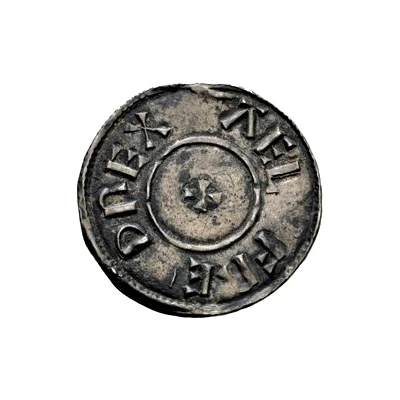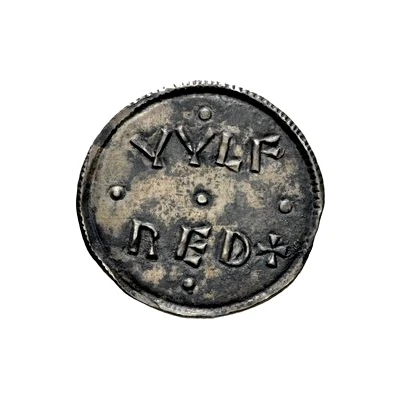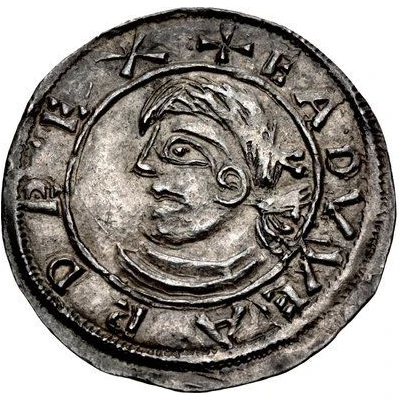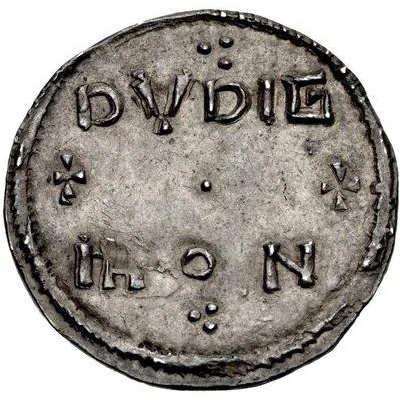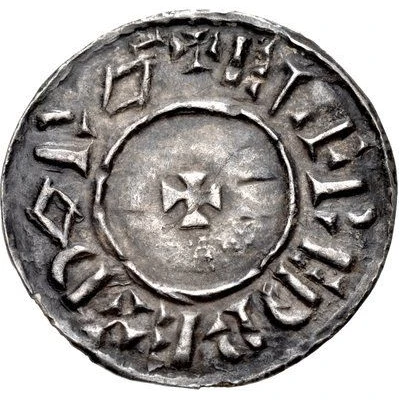
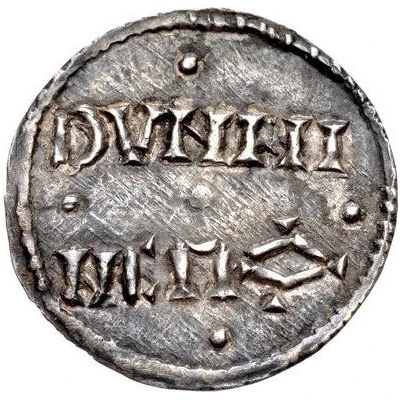

© Classical Numismatic Group, Inc.
Penny - Alfred the Great Canterbury
| Silver | 1.46 g | 22 mm |
| Location | Kingdom of Wessex (Kingdoms of British Isles and Frisia) |
|---|---|
| Moneyer | Dunning |
| King | Alfred the Great (871-899) |
| Type | Standard circulation coin |
| Years | 880-899 |
| Value | 1 Penny (1⁄240) |
| Currency | Pound |
| Composition | Silver |
| Weight | 1.46 g |
| Diameter | 22 mm |
| Shape | Round (irregular) |
| Technique | Hammered |
| Orientation | Variable alignment ↺ |
| Demonetized | Yes |
| Updated | 2024-10-09 |
| Numista | N#313749 |
|---|---|
| Rarity index | 100% |
Reverse
Moneyer's name across two lines with pellets above and below, three pellets between.
Script: Latin
Lettering:
DVNNI
NC MO
Translation: Dunning, moneyer.
Comment
Anglo-Saxon Middle Period (c.780-973), Kings of Wessex (786-924), Alfred the Great (871-899), Third coinage (880-899).Two line type.
Brother and successor to Aethelred, Alfred had to contend with invading Danish armies for much of his reign. In 878, he and Guthrum the Dane divided the country, with Alfred holding all England south and west of Watling Street. Alfred asserted over-lordship of Mercia and London from c.880. (courtesy of Spink SCBC 56th ed. 2021)
Interesting fact
The Penny - Alfred the Great (Canterbury) (880-899) coin was made of silver, which was a significant change from the previous coins that were made of copper or bronze. This change in material was likely due to the scarcity of copper and bronze during Alfred's reign, and the use of silver was a way to maintain the value of the coin while still ensuring that it was made of a durable material.
